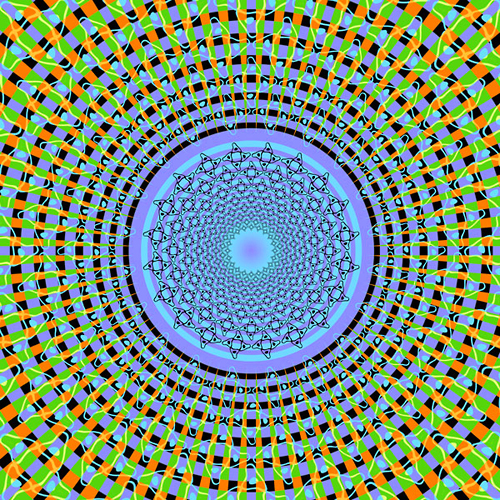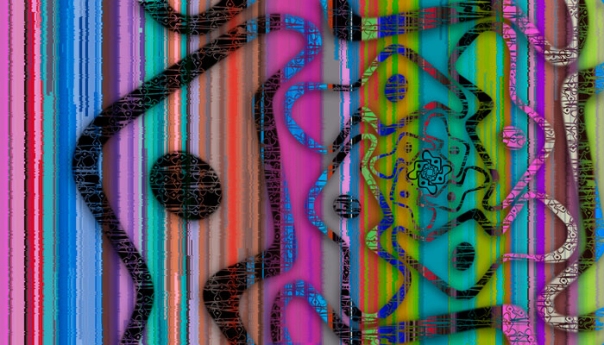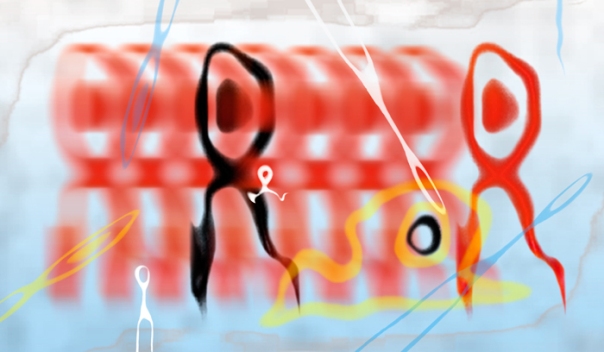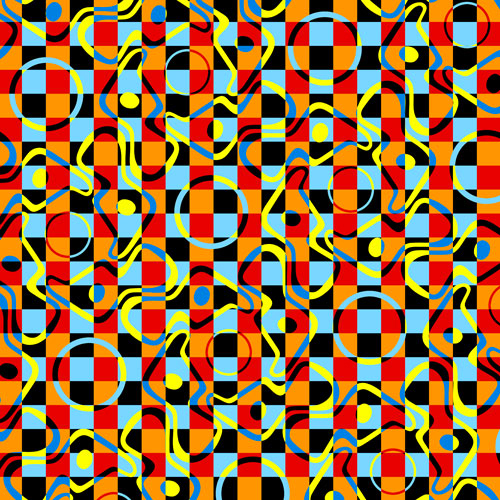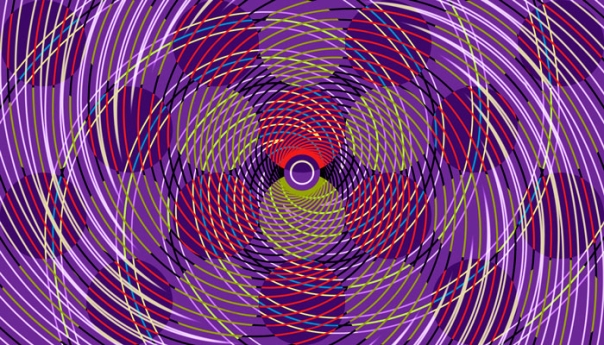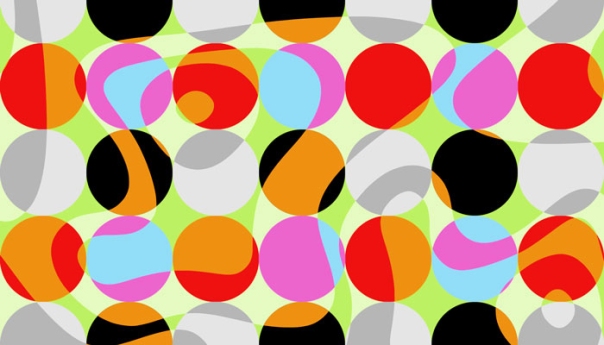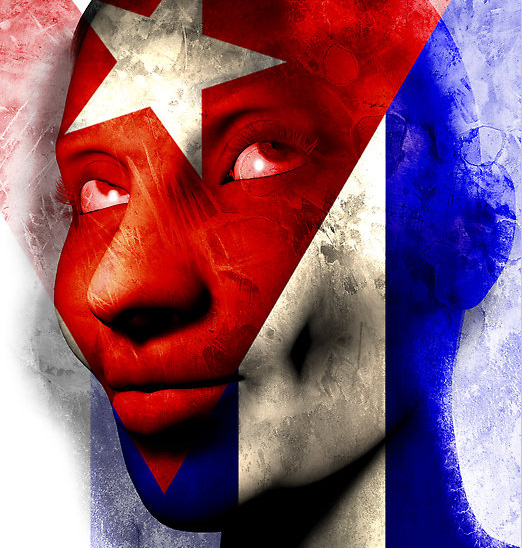 “Cuban Avatar”
“Cuban Avatar”
___________________________________________________________
Danilo Lejardi : Ethno-Digitalis
by Max Eternity
___________________________________________________________
Latino artist Danilo Lejardi “paints” 3D scenes to captivate the psyche and soul. Currently living in Columbia, he was born and raised in pre-Castro Cuba.
Recently I had a chance to chat with him about his extraordinary life and cross-continental career, encompassing photography, television, art history and 3D digital illustration.
***
Hello Danilo, welcome to AD Mag
Hi, Max
You come from a very diverse ethnic and cultural background. Could you tell us about that?
Yes, I grew up in Havana in the pre Castro revolution period, in an intrinsically incompatible ambiance, being exposed to both western and Afro-Cuban influences.
While living in the Pogolotti neighborhood, one of the most humble places in Havana at that time, I studied all the way from kindergarten to high school at the most important American school we had in the Island. It was called Candler College, an exclusive school for the affluent.
So…I grew up living in two very different and almost irreconcilable worlds, trying to assimilate their respective cultures. There was a time when I knew more about American history and culture than about the history and the culture of my own country. On the other hand, there was no way of escaping the influence of the Afro-Cuban religions, which constituted a ubiquitous realm in my neighborhood.
Your artwork is very scenic, as if you “set a stage” and then capture scene in a photographic still. Would you say that’s an accurate description?
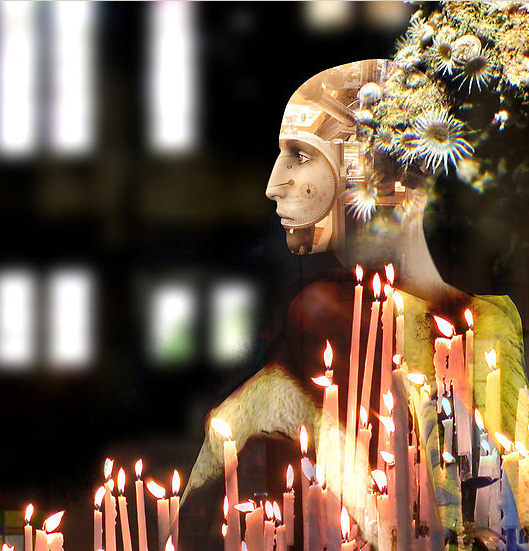 “Devoted”
“Devoted”
Yes, you’re absolutely right, though I consider the characters the main component of the scenery. I mean, I try to focus in my images on portraying the characters, on how they behave, what they feel or what they want to transmit. I don´t care too much about backgrounds, not in the first place, most of them are neutral or just plain black. I tend to start by setting up the character’s manners, including his/her looks. Once I am satisfied with the results I start thinking about the surroundings, choosing which elements would be necessary in order to enhance the character’s feelings or its general attitude.
You were in film and theater? Yes?
Yes, I’ve been in the film industry since I was 17 years old. I started working as a 16 mm film editor for the Cuban National TV News. Later, I became a 35 mm professional film editor. By 1974, I went into screenwriting and film directing. From that point on, I made a lot of films for the Cuban movie industry; they were basically documentaries and other non-fiction material.
Theatre came later; during the first half of the 90s, I wrote and directed several stage musicals, including a big Gala for the 40th anniversary of the ICRTV, the Cuban Institute for Radio and TV, with more than 500 artists on stage.
Are you self-taught or did you go to school?
I have a Master Degree in Arts History, which gave me a good grounding in all artistic fields. But I guess it doesn’t count too much in a practical sense. Let´s say that I´m self-taught, regarding all creative areas except for screenwriting.
Danilo, when working in television in Cuba, what was that like? What did you do?
With the advent of the video technology I had the chance to expand my work into the fiction arena. So I went to the International Film and Television School of San Antonio de lLos Baños (EICTV) in Havana, and took a couple of courses in advanced studies of screenwriting and directing. Later, in the mid 80s, I wrote and directed several TV drama shows for the ICRTV. At the end of this decade, I co-wrote and directed a TV drama series “La Botija” (The Jug), which won national and international recognition.
So, how long have you been a fine art, visual artist?
Being a visual artist? In one way, if we talk about using sophisticated digital software, I’d say 4 years, maybe less than that. But one cannot put aside the fact that I’ve been working on the audiovisual field for almost 40 years. I think all this experience forms the basis and supports my present works, in one way or another. For example, I certainly benefited from my knowledge about lighting and my experience in ‘stage setting’ for compositing the scenes in my images.
Some years back I began learning about non-Western religion, like Falun Gong, Buddhism, Hinduism and Santeria. I don’t know a whole lot about Santeria, not as much as I do about the others that I mention, but in looking at your work, I do see some Santeria motifs.
You probably know that Santería is a syncretic religion that includes the Yoruba religion. Basically, it originates from Africa, and has incorporated Roman Catholic traditions. Santeria constitutes one of the main ingredients of Cuban idiosyncrasy, the same as with most of Caribbean and Latin-American countries. It´s the ubiquitous realm I was referring to. So I decided to pay a tribute to the Yoruba religion, though concentrating on its beliefs, its philosophy, as well as its mythology. Practices are a quite different thing.
 “Sikaneka #2”
“Sikaneka #2”
What is the role of religion in your art, your life? Do you see spirituality and religion as the same?
I believe in the omnipresence of God. That´s why I don´t think it´s necessary for me to practice any particular religion. I want to think that He´s been always with all of us, in our thoughts and feelings, in the way we appreciate each other, and in the way we reflect our respective surroundings. I have this great respect, and also -sensibility, why not?- towards all kind of religions and beliefs. And I think it´s God who has given me the ability to connect and to try to understand others peoples´s cultures and idiosyncrasies. It´s not very hard to find works reflecting this diversity in my portfolio; from Greek mythology to Kaballah, from the Yoruba divination system to the Tarot. God is everywhere, and I think of arts as one of its greatest and magnificent manifestations.
Do I see spirituality and religion as the same? Definitively, not. And I find that, in some way, they can behave as antagonists. You see, I like to think of spirituality as the highest condition of freedom, as something that goes beyond time and the material world. It´s pure soul essence. And I cannot conceive our souls being governed by guidelines and routinist procedures. I don´t think I´d have to follow any specific rule in order be in communion with God. You know why? Cause I´m completely sure it was God who gave us our souls. Our free, open minded, and immeasurable souls.
It’s my belief that art can have a healing effect, that it can sometimes be transformative to a person’s psyche? Would you agree with this? Can art be some sort of catalyst?
Yes and no, Max. Let me try to make myself clear on this point. Art is a very big concept for me. Unfortunately, deciding to make art doesn´t necessarily turn you into an artist. Therefore, the way art affects a person may considerably vary from one to another. Among other things, it has to do with the fact that Arts in general are associated with other forms of the social conscience _such as Philosophy and Religion_ whose behavior _and influence_ irremediably depend upon the actual material conditions of living of a given person. So it´s really hard to establish a consensus on the way art might affect a person´s _ or an artist´s _ psyche.
I agree with the idea that art can be used as a sedative, as a sort of soothing or an exciting procedure in order to deal with some mental disorders, including stress. And, yes, we all have been blessed by that catalyst effect on our minds. But I don´t think art makes you neither a better nor a worse person. It´ll always be conditioned by a lot of other aspects of objective and subjective nature. With respect of the healing effect I wouldn´t know what to say. A far as I know, there are lots of outstanding artists throughout history that have committed suicide.
As you know by now, I too am an artist. But beyond my personal art career, I’ve been formulating a wide range of artistic theories. Relating to your work there’s one in particular, which comes to mind. It’s called Negro Electro. Any thoughts on this, or whatever might be considered evolutions in artistic genres?
I must point out that I am an artist not an art critic or philosopher. I express my feelings and thoughts through images not words.
I’m often asked by viewers to interpret my images, or to say ‘what does it mean’ and ‘where does it come from’. I generally try to avoid answering these questions. Once I finish an art piece it gains its independent existence – the viewers’ interpretations are as valid as mine. Well Max, unfortunately, it refers to your question too. I don’t feel qualified or inclined to get into artistic theories or classifying art works into genres. I just create the art, I’ll let others analyze them, classify them, or just enjoy them.
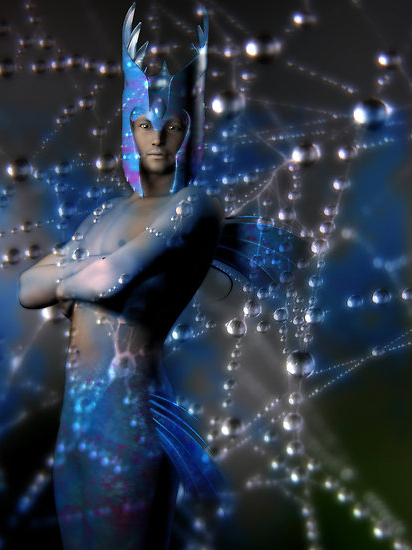 “Inle”
“Inle”
Do you have any predictions about the future of digital art?
I think we´ve been creating a lot of conceptual barriers and artificial feuds, on the inside grounds of what is considered digital art, something that is potentially dangerous not only to the digital art but to the future of all arts. You see, somehow we have come to be grouped according to the basic softwares we use for our works; then, when someone tries to get a different result by combining his/her stuff with some other software, it´s usually considered as heresy. For instance, the word “photoshopped” is generally used in a pejorative way, not only among digital artists but also among outstanding photographers. Coming from the cinema 4D, a 3D software, I have gained a lot of criticism for the simple fact of using basic Poser [ another 3D software] figures in my work.
Well, Max, I think that the final result is what really counts. Most viewers don´t know and they don´t have to know a thing about software . You capture their attention or you don´t. To make it simple, you make art or you don´t.
I think digital art has an enormous way to go into the future. There are thousands of incredibly talented artists in this field. But as long as we keep those pathetic concepts and barriers it´ll be more difficult to project our work into the next day. And tomorrow is already the future, isn´t it?
Danilo, thanks for taking the time to speak with me. Your work is very fascinating.
Thanks you, Max. I´ve never been a man of words; I don´t even “think” too much; most of the time, I´ve been guided by mere intuition. So I´ll always appreciate you for giving me the chance to make a pause and to reconsider so many things regarding my life and my own art.
 “Root Colors #6”
“Root Colors #6”
___________________________________________________________
See more art in the AD Mag Artist Galleries, and be sure to visit one or both of Lejardi’s sites here and here.
 “I Don’t Think We’re in Kansas Anymore”
“I Don’t Think We’re in Kansas Anymore”